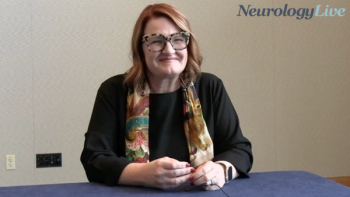
Framework of Dravet Syndrome Long-Term Cognitive Development Functions Proposed
Behavioral abnormalities, reported from 14 studies, highlighted autistic-like traits and attention and hyperactivity disorders, slightly improving with age in patients with Dravet syndrome.
Deconstructing the neurocognitive development of Dravet syndrome (DS) phenotype is associated with 3 main theoretical hypotheses including the dorsal-stream vulnerability premise, the sensorimotor-integration deficit theory, and the cerebellar-like configuration, according to findings from a scoping review.
Margherita Bertuccelli, PhD, department of general psychology, University of Padova, and colleagues selected 21 reports that focused on cognitive deficits and/or behavioral abnormalities in DS published between 1978 and March 15, 2020. The outcomes of the 21 included articles were grouped according to cognitive domain assessed: general intellectual/developmental quotient, lower-order cognitive functions, sensory-motor integration, higher-order cognitive functions, and behavioral outcomes.
A total of 18 studies that assessed general intellectual/developmental quotients documented variable degrees of developmental delay/intellectual disability in patients with DS, ranging from low average IQ to profound intellectual disability. In particular, 11 of 18 reports highlighted severe impairment in visual, fine motor, gross motor, visuomotor, visuospatial, and receptive language functions.
Behavioral abnormalities were evaluated in 14 of 21 included studies using a multitude of scales. Of the 14 articles, 7 reported autistic-like traits, 6 attention deficit, and 6 hyperactivity disorders. Additionally, researchers observed externalizing behaviors—especially hyperactivity, impulsivity, and aggressiveness—were more common than internalizing behaviors, with the exception of 2 studies that reported the opposite pattern.
READ MORE:
Three studies investigating comorbidity between DS and autism spectrum disorder (ASD) found between 23% and 62% of people with DS are additionally diagnosed with ASD. Furthermore, the presence of pervasive autistic-like traits such as poor eye contact, ritualistic behaviors, narrow interests, speech delay, adherence to routine, and low ability to express emotions were reported in another 8 studies.
Seven of the articles analyzed by Bertuccelli et al sensorimotor-integration abilities in DS. Of these, 5 examined visuo-motor integration abilities and 5 auditory-motor integration abilities. Inferior performances were reported in all 5 articles, and in 1 particular study, a finger tapping task’s performance showed fewer taps and higher inter-tap latencies than in healthy age-matched controls.
Language comprehension, attention, memory, and executive functions was observed in 7 studies. Patients with DS reported normal language-comprehension abilities, with few exceptions showing a borderline impairment level. Significantly worse performance was reported in DS than in controls in a go/no-go task, in terms of correct action execution (percent of correct responses in DS group: mean, 30.1 [standard deviation (SD), 13.2; control group: mean, 94.6 [SD, 4.6]) and inhibitory capacity (P < .001).
The dorsal-stream vulnerability theoretical framework inhibits the occipito-parieto-frontal network and is hypothesized that precocious visual impairment precedes the decline of the visuomotor dorsal pathway.
Researchers hypothesized that a decrease of cerebellar Purkinje neurons in a cerebellar-like pattern leads to motor alterations including ataxia and poor motor coordination, cognitive deficits such as executive functions, spatial cognition, and language, and behavioral abnormalities like the aforementioned autistic-like behaviors.
"The cerebellar disorder is likely to play a role in determining impairments that are different and complimentary to the ones explained by the sensorimotor-integration deficit. In fact, given the complexity of the clinical manifestations, we cannot exclude neocortical and subcortical areas other than the cerebellum,” Bertuccelli et al noted.
The third hypothesis, sensorimotor-integration deficit, inhibits the sensory input parieto-frontal pathway. This deficit can lead to other visuomotor deficits, auditory-motor deficits, and impaired social learning abilities.
The study authors concluded that future research should focus on developing new screening tools able to grasp and distinguish these aspects from the diagnostic phase. This, in turn, will lead to cognitive and motor rehabilitation programs targeting each subject’s specific pool of symptoms.
REFERENCE
Bertuccelli M, Verheyen K, Hallemans A, et al. Deconstructing Dravet syndrome neurocognitive development: a scoping review. Epilepsia. Published online March 1, 2021. doi: 10.1111/epi.16844
Newsletter
Keep your finger on the pulse of neurology—subscribe to NeurologyLive for expert interviews, new data, and breakthrough treatment updates.


































